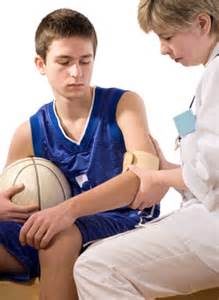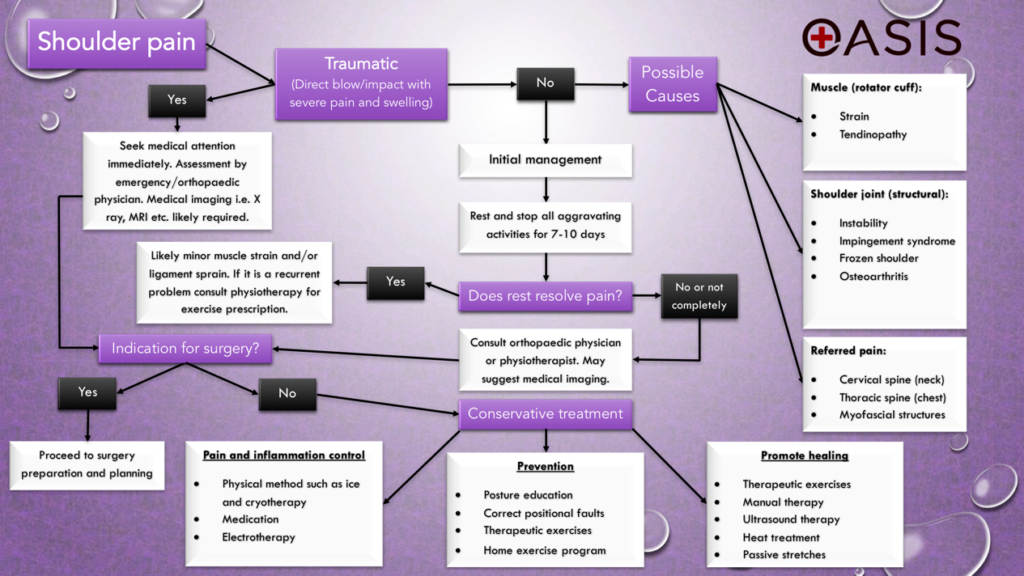Common sports injuries in teenagers fall into two categories. Acute injuries and overuse injuries.
Acute Injuries
This could be a sprained ankle or a torn ligament in the knee, occurring suddenly following a collision or a missed step.
Overuse Injuries
This is caused by repetitive motion that damages that particular used body part over time.
Overuse injuries used to be rare among teens and kids but increasingly we are seeing more overuse injuries in teens who are specializing in one sport early on. For example: A common injury seen in baseball pitchers would be damage to the elbow ligament and/or osteochondritis dissecans*.
* Osteochondritis dissecans is a joint condition in which bone underneath the cartilage of a joint dies due to lack of blood flow. This bone and cartilage can then break loose, causing pain and possibly hinder joint motion.
Specializing in one sport early and pursuing that sport singularly through adolescence rather than playing multiple sports simultaneously can predispose young athletes to overuse injuries. The repetitive motion of using the same area of the body over and over, like a baseball pitcher’s throwing arm, can leave him/her more vulnerable to degenerative joint problems. As young athletes are still growing, their growth plate and soft cartilage at the bones’ end are prone to damage and in serious cases can predispose them to arthritis later in life.
Focusing on all-around athleticism keeps the body balanced and less vulnerable to injury. The benefit of cross-training would also benefit a young athletes main sport. Encouraging young athletes to branch out and try one or two other sports will help build up other areas of the body and give the overused part a break.

How to protect yourself from overuse and acute injuries:
1. Body Conditioning
Conditioning of the body is an essential first step. Teenagers starting out should start by getting in good overall shape, including aerobic fitness, strength and flexibility.
- Pre-training conditioning roughly would take 6 – 8 weeks working out most days, if not every day, for 30mins.
- Training for serious or higher level teen athletes may need to place more emphasis on recovery time as part of their training schedule. Training hard on some days while going easier and working on recovery and technique on alternate days for example.
2. Proper Sporting Technique
Another important aspect of injury prevention is learning the proper technique of the particular sport you play. For example, baseball pitchers that rely mostly on arms for power rather than using their trunk and leg supporting muscles could cause acute injuries. Done correctly, both strength training and working on the core muscles of the back and abdomen may prevent injury and boost performance.
3.Sports Warm-up
General warm-up and in higher level athletes “sports-specific warm-up” also can help. Research has found that the rates of ACL (anterior cruciate ligament of the knee) injuries are lower when a sports-specific warm-up is built into the training program of football players.
4. Don’t Play Through Injury
Kids tend to play through pain when they can, especially if they are really into the sport. If they continue to play it could lead to growth plate problems in the bone. This can impact the rate of growth or in serious cases hinder growth altogether. Parents need to monitor their children closely when an injury occurs and seek medical help in a timely manner to avoid further damage.
5. Appropriate Rest when Injured
Injuries do happen and when it does its severity can be lessened by rest and prompt treatment. An inappropriate reaction to injury would be to discourage teens from continuing sports later on. The benefit of physical activity far outweighs the risk of injury.
As you may know or may not know, OASIS is the official medical sponsor for the 2016 China Open. We will be there during the tennis games to provide professional medical assistance to tennis players and ensure any sports injuries are promptly and professionally addressed. Apart from that, for any of you coming to watch the games, OASIS will have a section setup for free consultations where you can ask about any issues you may be dealing with such as shoulder pain.
Shoulder pain can be a major issue for tennis professionals. It can occur in tennis players due to the repeated stresses during tennis strokes, particularly the serve. The Rotator Cuff muscles of the shoulder, that provide stability to the ball and socket can get impinged’ between the muscles and the bony prominence of the shoulder, leading to inflammation, thus causing pain whenever the arm is raised.
If you’re an avid tennis player and find yourself dealing with shoulder pain, follow this algorithmic chart below designed by OASIS Physiotherapist Jason Tam, and see what may be the best way forward in managing your shoulder pain.
 If you are interested in getting in contact with Dr. Jason Tam (pictured below), call 010-5985 0200
If you are interested in getting in contact with Dr. Jason Tam (pictured below), call 010-5985 0200

This article is courtesy of OASIS Head of Physiotherapy Jason Tam.
Photos: OASIS, NY Metro Parents




